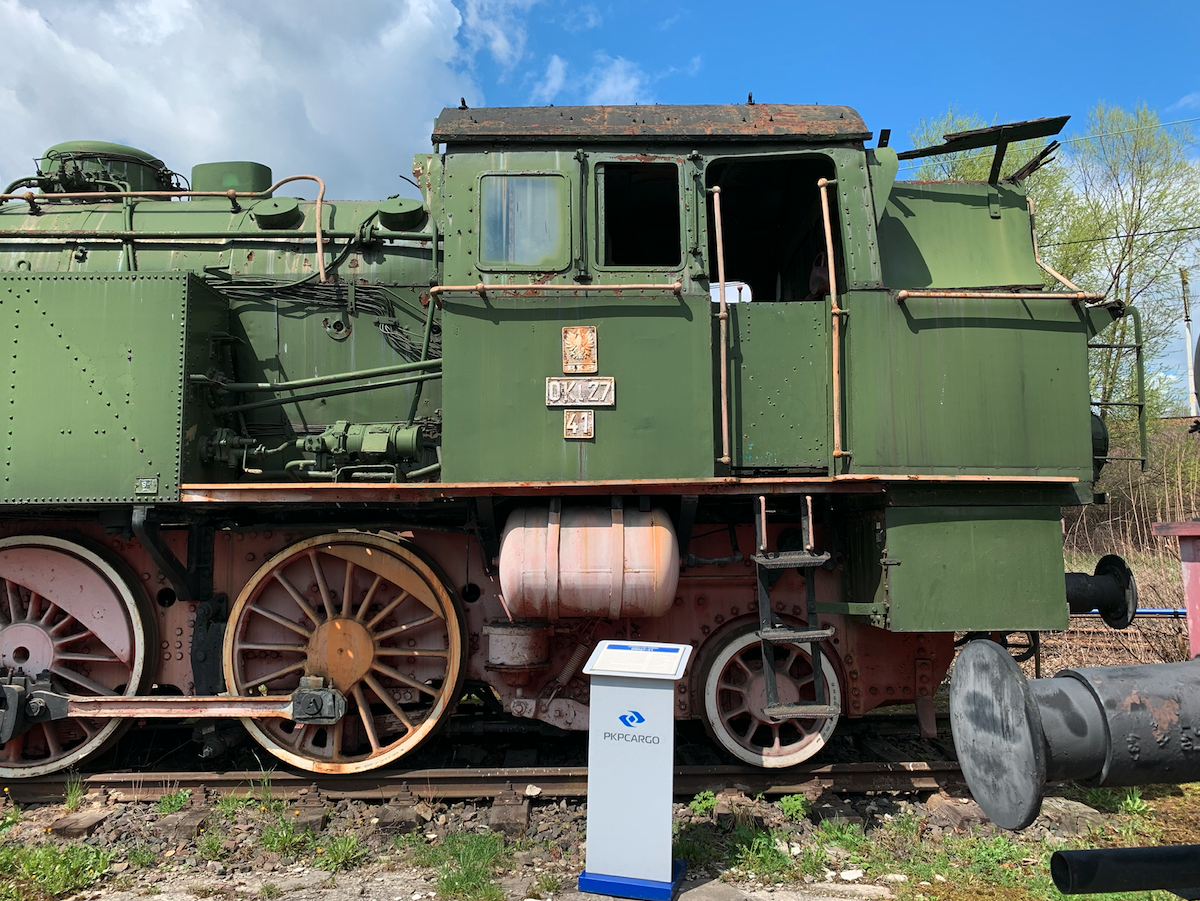Kraków 2021-12-21
Polish steam locomotive OKl27 produced by HCP.
The OKl27 steam locomotive is a Polish, passengers, short, with the "l" axis system, ie 1’C1 (oOOOo), approved for implementation in 1927. The steam locomotive was intended for servicing passengers and light freight trains over short distances. Train running speed up to 80 km / h. The steam locomotive was developed and manufactured in HCP plants.


Immediately after the rebirth of the Republic of Poland, the most important needs of railway communication were identified. As early as December 1918, the necessity to build tendrzak steam locomotives for the local passenger and goods traffic was indicated. However, the priority was the Ty23 and Os24 linear steam locomotives, but the tendrians were not forgotten.
In 1925, in the design office of the HCP plant in Poznań, the preparation of technical documentation for the new tender was started. The OKl27 locomotive received the "l" axis system, i.e. 1'C1 (oOOOo). This arrangement was repeated on the Ol49 steam locomotive.
The work on the locomotive project was led by engineer Stanisław Domaniewski. In 1927, the documentation of the OKl27 steam locomotive was already approved by the Ministry of Communications. In 1928, four locomotives were ready and tested. Then series production started. Until the German army attacked Poland in 1939, 122 OKl27 locomotives were built.
During production, the locomotives were modified. For example, Adams rolling axles have been replaced by Krauss-Helmholtz carriages. The Krauss-Helmholtz bogie is a single-axle bogie used in the construction of steam locomotives, facilitating overcoming curves, enabling the turning of the rolling axle and moving the associated axle associated with it. The cart was also equipped with a spring or gravity return adjuster. It was developed by Richard von Helmholtz and used in 1888. The rolling axles of the Adams system were prone to jamming and, consequently, to the locomotive derailment. The Krauss-Helmholtz bogie and the narrowed rim of the main axle by 15 mm allowed the OKl27 locomotive to travel at a speed of 80 km / h in curves with a radius of 150 m.
The OKl27 steam locomotive uses a boiler with a steam superheater. The firebox is made of copper. The boiler allowed for quick steam overheating to the temperature of 330 degrees Celsius, which is important when the train starts frequently in local traffic. The boiler had Friedmann blow-down valves, Pop-Coale safety valves, a tipping grate, a large ash pan with drain valves that opened from the driver's cabin. The door to the furnace has openings enabling air to flow around the dirty grate. There was also a flame tube blowing system to remove carbon deposits and soot.
The steam locomotive sanctuary was built of 25 mm thick steel sheets. The sandbox built on the boiler fed sand under the middle wheels with a compressed air system. The locomotive is equipped with a steam supply system for passenger carriages for their heating. Westinghouse Composite Air Braking System. H11a3 three-cylinder, two-stage compressor. Initially, the lighting of the locomotive was kerosene lamps. From 1931, all locomotives received an electrical system from ERA, powered by electricity from a 24 V turbo generator.
Many elements of the OKl27 locomotive were of Polish design and production. These elements were also used in other Polish steam locomotives.
After the German attack on Poland, most of the OKl27 steam locomotives were incorporated into the German railways. After September 17, 1939, some of the locomotives were taken over by the CCCP railroad. Not all of them have been turned into a wide track. After the Second World War, about 95 OKl27 locomotives returned to the Polish State Railways. During their renovation, copper fireboxes were replaced with steel ones. Steam locomotives served in PKP until 1985. Four OKl27 locomotives have been preserved for museum purposes: OKl27-26 in Warsaw, OKl27-41 in Chabówka, OKl27-10 in Skierniewice, and OKl27-27 in Gdynia Grabówek.
The OKl27 locomotive was the first successful structure of a tendritz steam locomotive designed and manufactured in Poland. In 1929, the OKl27 steam locomotive was awarded a gold medal at the General National Exhibition in Poznań.
Steam locomotive OKl27-41.
Producer of HCP in Poznań. Serial No. 270. Produced in 1932. Designation before World War II OKl27-91. Designation during the German occupation DRG 75 1278. The locomotive worked in various locomotive sheds, and the longest time in DOKP Warszawa. He finished his work for PKP in Małaszewicze in March 1974. Then he joined ZNTK in Łapy, where he worked until 1984. In October 1993, it was rebuilt in Chabówka.
T-T data of the OKl27-41 steam locomotive:
Total length 12.86 m. Height 4.45 m. Curb weight 66 700 kg. Service weight 85 100 kg. Water supply 9 m3. 4 tons of coal. The steam pressure in the boiler is 14 atm. The heating area of the boiler is 127.7 m2. The heating area of the superheater is 45.2 m2. Grate area of 2.6 m2. Driving wheels diameter 1.50 m. Roller diameter 0.86 m. Maximum axle load 18,200 kg. Design speed 80 km / h. The wheel set arrangement is 1-3-1. The locomotive pulled a 130-ton train at a speed of 80 km / h.
Written by Karol Placha Hetman
